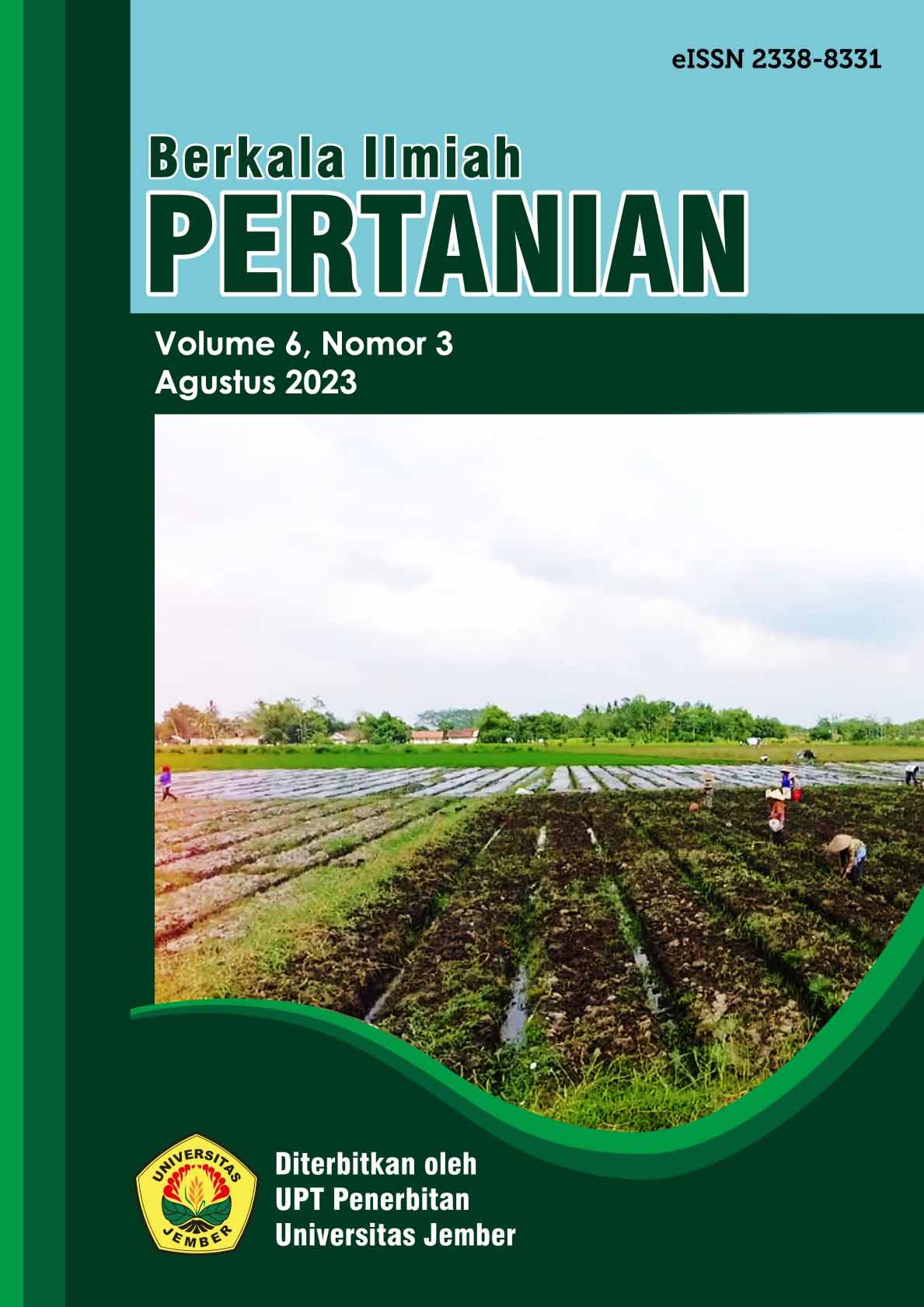Efektivitas Beauvaria bassiana dan Metarhizium anisopliae terhadap Pengendalian Hama Thrips sp. (Thysanoptera: Tripidae) pada Tanaman Cabai Besar (Capsicum annuum L.)
DOI:
https://doi.org/10.19184/bip.v6i3.38197Abstract
The productivity of chili plants can be reduced due to the disturbance of various Plant Pest Organisms (OPT), one of which is insect pests from the Order Thysanoptera, family Thripidae or better known as Thrips sp. Thrips pests attack plants by sucking the liquid on the leaf surface, especially the young leaves. Symptoms that appear are silvery spots then change color to copper brown, the leaves curl or wrinkle and eventually the plant dies. Control measures that can be used to control or suppress Thrips sp. pest populations. other than using insecticides, namely by utilizing Biological Control Agents (APH) such as the entomopathogenic fungi Metarhizium anisopliae and Beauveria bassiana. The fungus B. bassiana infects host insects through physical contact by attaching conidia to the integument. M. anisopliae infection begins with the attachment of M. anisopliae spores to the cuticle of the insect and then the spores of M. anisopliae germinate and penetrate into the insect's body. This study used a field experiment method arranged in a Factorial Completely Randomized Design (CRD) with 2 factors and 4 replications. The first factor was the type of entomopathogenic fungus which consisted of two levels, A1 = Beauveria bassiana, A2 = Metarhizium anisopliae. The second factor was the density of conidia which consisted of 4 types: K1 = 105/ml, K2 = 106/ml, K3 = 107/ml, K4 = 108/ml. The observed data is quantitative data, then it will be analyzed statistically using ANOVA analysis of variance, if there is a significant difference then a follow-up test will be carried out using the DMRT. The effect of factor A1 (B. bassiana) is better than the effect of factor A2 (M. anisopliae) on the mortality of Thrips sp. and the best effect of factor K is on K4 (spore density 108/ml). So it is recommended to use the A1K4 treatment because it is effective on the mortality of Thrips sp. and the effect of factor K4 (spore density of 108/ml) was better than the effect of factors K1 (spore density of 105/ml), K2 (spore density of 106/ml), and K3 (spore density of 107/ml) on the intensity of attack of Thrips sp. So it is recommended to use the K4 treatment because it is effective against the intensity of attacks of Thrips sp.
Downloads
Downloads
Published
Issue
Section
License
Authors who publish with this journal agree to the following terms:
1.Authors retain copyright and grant the journal right of first publication with the work simultaneously licensed under a Creative Commons Attribution-NonCommercial 4.0 International License that allows others to share the work with an acknowledgement of the work's authorship and initial publication in this journal.
2.Authors are able to enter into separate, additional contractual arrangements for the non-exclusive distribution of the journal's published version of the work (e.g., post it to an institutional repository or publish it in a book), with an acknowledgement of its initial publication in this journal.
3.Authors are permitted and encouraged to post their work online (e.g., in institutional repositories or on their website) prior to and during the submission process, as it can lead to productive exchanges, as well as earlier and greater citation of published work (See The Effect of Open Access).




















